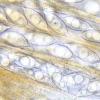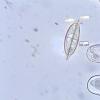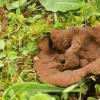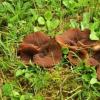
28-04-2014 09:52
Dragiša SavicOn dead stem of Asplenium scolopendrium I found Ps

23-04-2014 22:29
Hello,I found these black small frb on leaves of

27-04-2014 06:48
 Arold Lavoie
Arold Lavoie
Bonjour,J'aimerrais savoir si selon vous, il s'agi

25-04-2014 17:11
Sur populus tremuloides.Spores 16-20*6-7 u. asque

26-04-2014 12:05
 Alessio Pierotti
Alessio Pierotti
Someone have the description of Lichenopeltella am
Salut,
ces champignons, je trouvais sur une pelouse devant la maison sans liaison(connexion) avec le bois. L'odeur était fraîchement l'un peu en forme de chlore. Disciotis venosa se retire. Que cela peut être ?
Merci Dirk

Salut,
39,6x12,6 µ le m avec l'accessoire(la breloque), 30,2x12,6 µ le m sans accessoire(breloque). A la position(au lieu d'emplacement) elle-même n'est et étaient à trouver aucun reste de bois dans la terre(le sol). La facile(légère) odeur après le chlore lis - moi au premier moment à Disciotis venosa pensent lequel ce n'est pas def.
Merci Dirk




